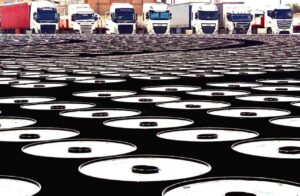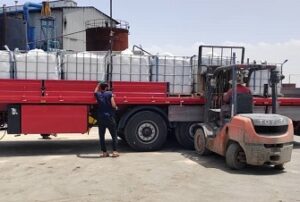Global Modified Bitumen Market Set to Surpass $27B as Durable Infrastructure Takes Priority
Modified Bitumen Market: Positioned at the Intersection of Resilience, Regulation, and Infrastructure Growth
As infrastructure systems evolve to meet the demands of urbanization, climate adaptation, and sustainable development, modified bitumen has emerged as a critical material in next-generation paving solutions. Its ability to enhance road durability, withstand environmental stress, and align with regulatory targets is reshaping both how roads are built and how governments and industries measure performance.
Sustainability Requirements Shaping Market Trends
Environmental policies and carbon-reduction frameworks are playing a central role in material selection. A recent market study projects that the global polymer-modified bitumen (PMB) segment—including SBS, crumb rubber, and eco-friendly additives—will surpass USD 15.8 billion by 2030. Much of this growth is expected to come from the Asia-Pacific region, where infrastructure investment is rising alongside policy-driven green construction mandates.
Lifecycle Economics: Higher Cost, Greater Return
While the cost of modified binders may rise by 30% to 100% over conventional asphalt, long-term savings are a driving factor behind widespread adoption. Data from the FHWA indicates that PMBs can extend pavement lifespan by 10% to 20%, ultimately reducing maintenance frequency and associated costs. For infrastructure owners and private investors alike, the long-term value proposition is becoming increasingly attractive.
Green Chemistry and Circular Economy Integration
In line with ESG goals and circular economy strategies, manufacturers are increasingly incorporating recycled polymers—such as crumb rubber and waste plastics—as well as bio-based modifiers. These innovations are allowing the industry to meet environmental criteria without compromising material performance, supporting more sustainable construction models.
Strategic Deployment in High-Stress Applications
One of the clearest indicators of the material’s growing role is its use in high-performance infrastructure. According to the U.S. Federal Highway Administration, polymer-modified binders now account for approximately 15% of total asphalt binder tonnage used annually—primarily in high-stress environments such as highways and airport runways. These applications reflect a shift toward materials capable of withstanding mechanical loads, thermal fluctuations, and extended service lifespans.
Performance Certifications and Global Standards
As material performance becomes a procurement priority, certification and compliance are critical. Modified bitumen products are now expected to meet regional performance standards such as CE (Europe), ASTM (U.S.), and BIS (India). These certifications support quality assurance, procurement confidence, and consistency across publicly funded infrastructure projects.
Next-Gen Formulations: From Single-Polymers to Hybrid Blends
The industry is moving beyond legacy single-polymer systems like SBS and APP. In their place, hybrid formulations—such as SBS+APP or SBS+crumb rubber—are gaining ground for their improved elasticity, UV resistance, and thermal stability. These advanced products enable greater adaptability across diverse climates and technical applications, including both paving and roofing.
Installation Efficiency and Health-Safety Prioritization
Modified bitumen membranes are also evolving in application method. Cold-applied and self-adhesive systems are growing in popularity due to their lower VOC emissions, ease of handling, and improved worker safety—factors that now weigh heavily in commercial and public-sector procurement decisions. Pioneering solutions like Sika Sarnafil SAFB are already setting benchmarks in this domain.
Market Scale and Growth Potential
Reflecting the scale of adoption and innovation, the global market for modified bitumen was valued at approximately USD 27 billion in 2024. It is projected to grow at a compound annual growth rate (CAGR) of 4.6% from 2025 to 2034—driven by rising demand for climate-adaptive materials, long-term asset performance, and policy-backed infrastructure expansion.




